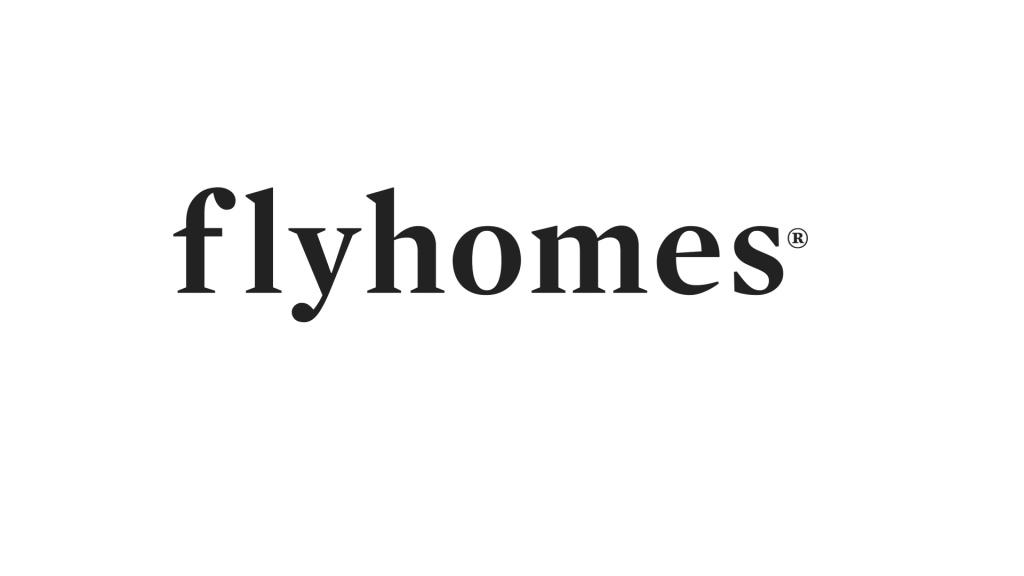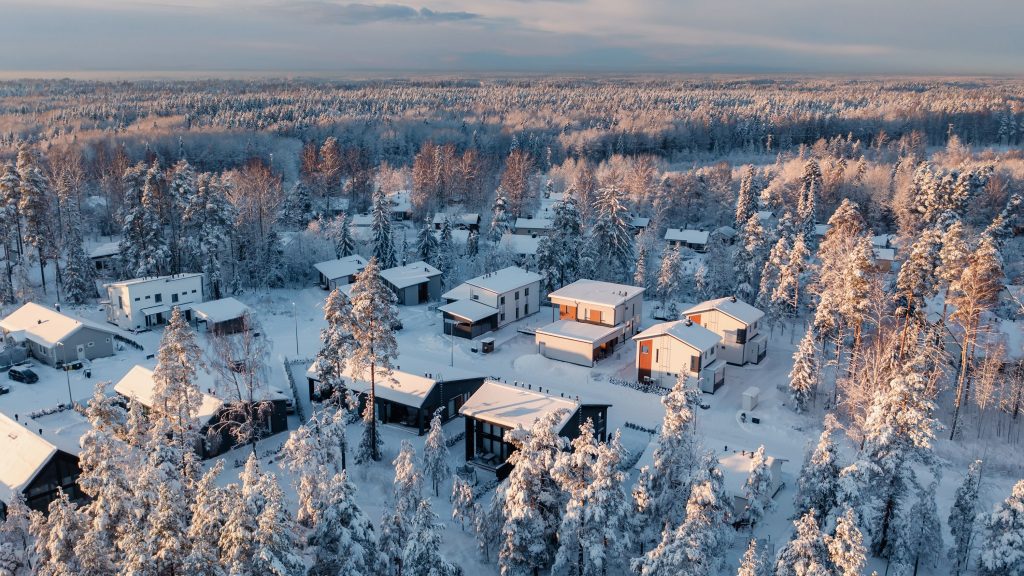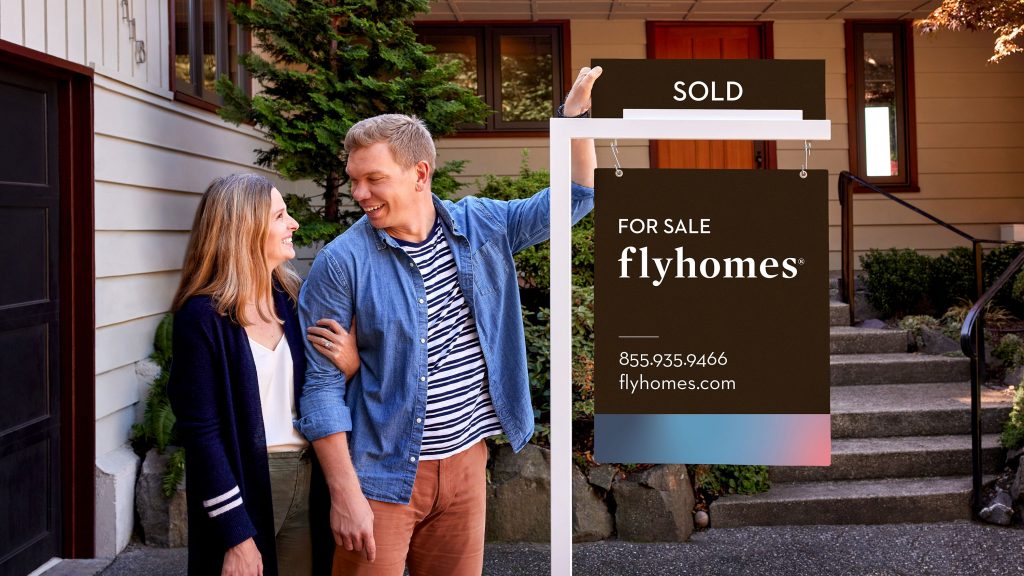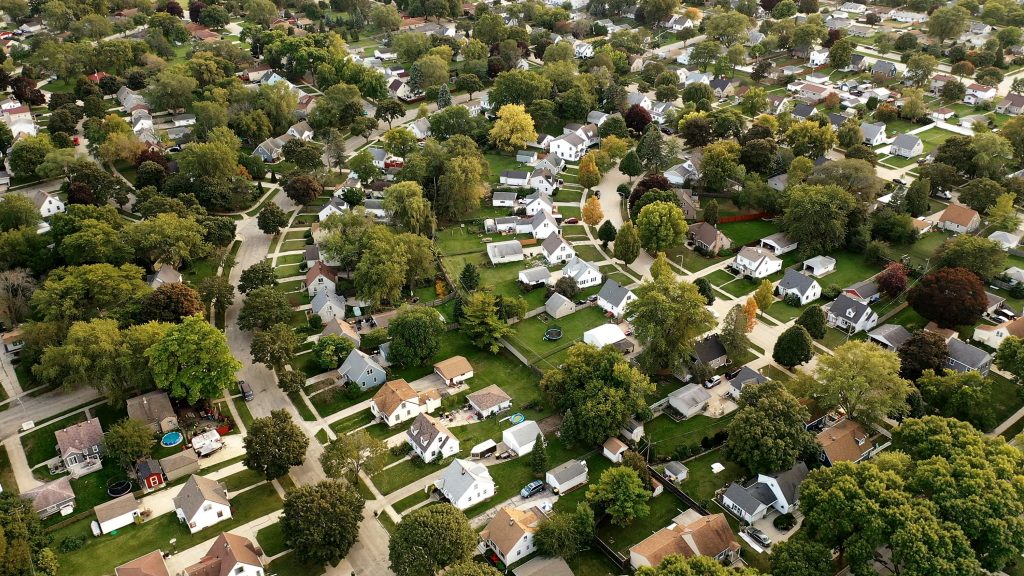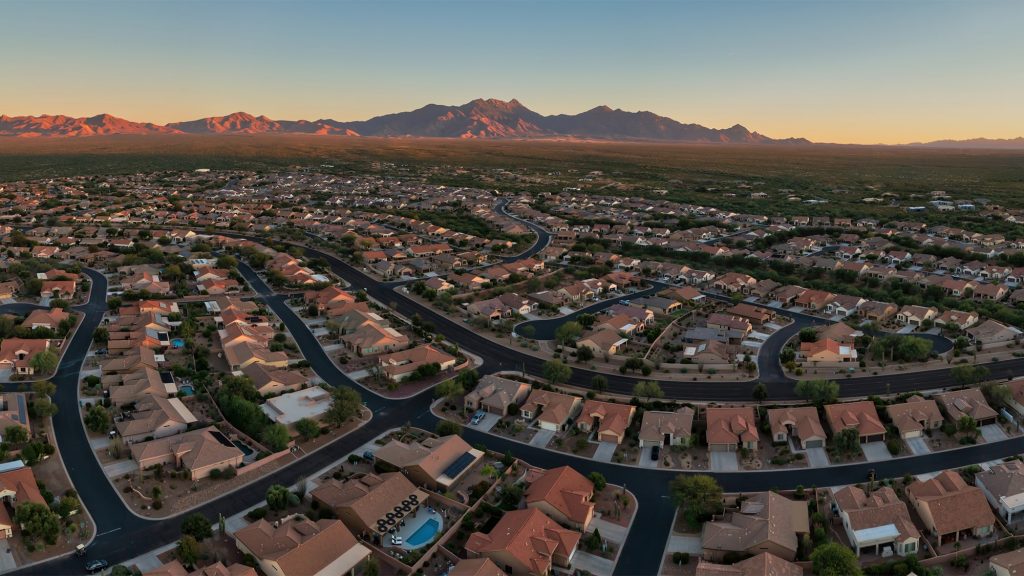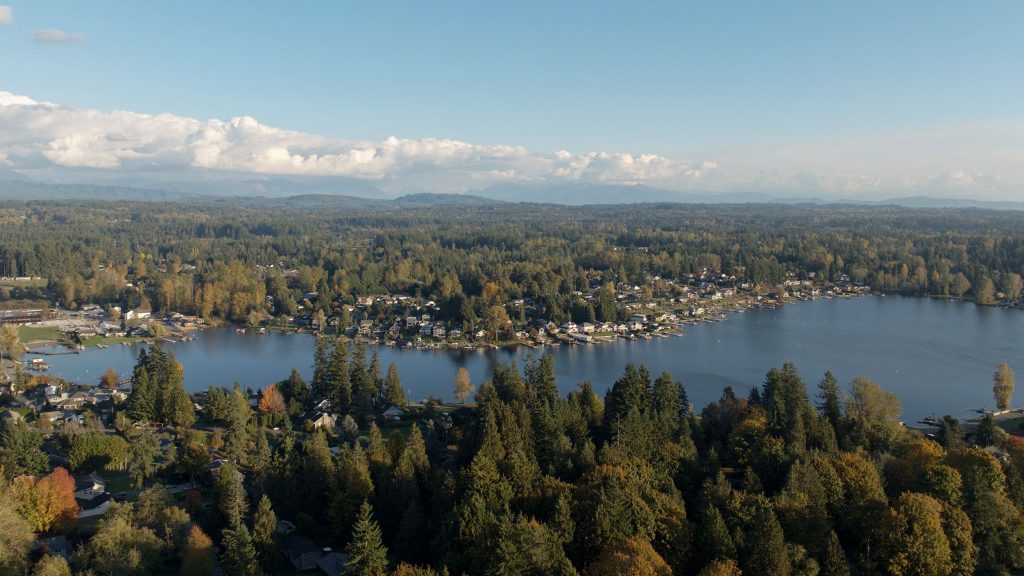Sharing spaces – from living spaces to workspaces – has become increasingly popular in recent years. Despite being far from a new concept, multi-family homes are a popular example of this.
The term “multi-family home” refers to any building with several separate units combined into one unit, or to a complex with several buildings containing several units together.
So, let’s look at the different types that are out there, the pros and cons of Multi-Family Houses in general, and the options you have in renting them out.
What are Multi-Family Houses?
Multi-Family Houses are a popular and practical way to divide a building into separate living units and can come in several different types. They’re a great way to get on the property ladder and for those with a little more capital, a great way to start a real estate portfolio.
Multi-Family Houses are often bought by people who want to live in one part of a property and rent out one or more other units within it, and they are also bought by people who are looking for a sound investment opportunity that they manage as off-site landlords.
This type of property has the added benefit that projected rental income can be calculated as part of a mortgage approval process.
History of Multi-Family Houses
Multi-Family Houses first started to be built in the US in the mid-1800s. By the closing decades of the century, America had a growing middle class and the burgeoning population created a huge demand for housing.
Tenement-style buildings were built on a large scale to meet the demand — often with shared bathrooms and poor amenities. However, they were a good option for people that needed a home but who didn’t yet have the capital to buy their own house.
Thankfully, things have improved since the 1800s and Multi-Family Houses are now a great starter investment and are often the first rung on the property ladder for many people.
Styles of Multi-Family Houses
Duplex
Duplex properties are a very popular type of Multi-Family Home that consist of two connected living units. They either have a shared dividing wall or one dwelling is located on top of the other.
Triplex: the classic model revisited
As suggested by the name, a Triplex is simply three connected units, often built one on top of the other.
The Townhouse: an elegant version popular in New York
The townhouse is a style of Multi-Family House that is synonymous with cities like New York and often takes the form of a Duplex or a “maisonette” as it is known elsewhere in the world.
Townhouses generally share walls with their adjacent properties and are also known as Brownstones, Rowhouses, or “terraced” houses.
Semi-detached House: where flexibility meets opportunity
A Semi-Detached House is a property that shares a wall with one neighbor but is separate from and detached from the next. They sometimes have a shared hallway leading to their entrances or can have their own front doors.
Interiors of Multi-Family Houses
Multi-Family Homes vary enormously in their format and interiors but are all designed as self-contained and independent homes, with their own kitchen, bathroom, living and sleeping areas.
Why people buy Multi-Family Houses
Multi-Family Homes are bought as a way to get into real estate investment and for long-term income generation.
Savvy buyers know that once they have paid off the mortgage, the property will then start to provide them with a steady source of revenue.
This makes Multi-Family Homes a great investment for someone looking for a secure income stream during their retirement.
Places where Multi-Family Houses are popular in the US
Multi-Family Houses are popular across the US and are found in all sorts of configurations and styles. The suburbs of major cities often have a great selection, as many Single-Family Houses have been converted to house multiple occupants.
Pros and cons of Multi-Family Houses
Just like any other type of property, there are certain pros and cons associated with Multi-Family Houses — let’s take a look at them:
Pros
- Pro 1: A great benefit of the Multi-Family House is the potential for rental earnings. In fact, some owners avoid house payments altogether with the money they earn from their rental units. At the very least, rental earnings can be used to offset other living expenses.
- Pro 2: If you decide to be a live-in landlord, you’re Johnny-on-the-Spot when it comes to dealing with maintenance issues — you’re always around to keep an eye on your investment and nip problems in the bud.
- Pro 3: Home maintenance costs can be written off in your tax returns as business expenses, saving you money on the upkeep of your property.
- Pro 4: Multi-Family Houses enable you to live close to a loved one while retaining your own space and privacy — it’s a great setup for caring for elderly parents or other dependents.
Cons
- Con 1: The initial payment for your property may be more because you are buying several units at once.
- Con 2: Being a landlord may not be your cup of tea; it takes some commitment, and you need to consider if you have the time and energy to spare.
- Con 3: If you live close to your rental property, you need to maintain a distanced, yet professional and friendly relationship with the other residents. You’ll be their neighbor and their landlord. Good interpersonal skills are an advantage!
- Con 4: Your neighbor/tenants will expect you to be on hand to deal with problems quickly, so be prepared to turn out at all hours to deal with issues and emergencies…
Difference between Multi-Family Houses and Apartment Complexes
Once a Multi-Family Home exceeds four units, it becomes legally considered a commercial property.
This means it will come under different laws, codes, and taxes, as there are separate rules for residential and commercial properties.
Understanding the difference between Multi-Family Houses and Condominiums
There’s often confusion surrounding what constitutes a Multi-Family House and a Condominium.
They can look identical, but the difference lies in the fact that a Multi-Family Home is a property where the units are owned by the same person, whereas a condominium is generally a property where the units are owned by different people.
How to find Multi-Family Houses
What do you need to consider when looking for a Multi-Family House? Firstly, will you have enough room? You’ll need enough space for each family to live comfortably.
Then you’ll need to decide upon what type of property to look for. Are you after a complex with several living units or would a Single-Family House with an apartment attached fit the bill?
You can zero in on your ideal Multi-Family House here.
Which style of Multi-Family House is best for you?
What you want from a new property will determine what type of Multi-Family House to buy. If you want to be a live-in landlord, then it’s best to approach the purchase with your heart and your head — you’ll want to feel at home there and know you’ve made a good investment
If maximizing rental earnings is the prime objective, then you can approach the purchase more clinically and look for a property that will give you the biggest return.
For example, you might look for a property ideal for offering short-term rentals that’s situated near a busy conference center or transport hub.
The options are endless, so do your sums, choose carefully and be sure to buy the property that’s right for you and your circumstances.
Examples of Multi-Family Houses on Flyhomes
Arizona
- A newly updated and well-maintained duplex with garages.
- 3 bed, 2 bath, 1,600 sq ft
- $585,000
- See our entire selection of Arizona Multi-Family Homes
California
- A large, sunny, and artistically remodeled duplex
- 4 bed 3 bath 2,500 sq ft
- $1,195,000
- See our entire selection of California Multi-Family Homes
Colorado
- A two-unit investment opportunity newly remodeled
- 6 bed 4 bath 3,705 sq ft $845,000
- See our entire selection of Colorado Multi-Family Homes
Florida
- A cleaned and move-in-ready to be rented Duplex in Dade City
- 2 bed 2 bath 1,632 sq ft
- $259,900
- See our entire selection of Florida Multi-Family Homes
Georgia
- Brick Duplex is the perfect introduction to real-estate investment
- 4 bed 4 bath Lot Size: 16,988 sq ft
- $439,000
- See our entire selection of Georgia Multi-Family Homes
Nevada
- A Duplex in a community with a clubhouse and pool.
- 2 bed 2 bath 1,316 sq ft
- $275,000
- See our entire selection of Nevada Multi-Family Homes
North Carolina
- Duplex that sits on a golf course
- 3 bed 2 bath 1,767 sq ft
- $395,000
- See our entire selection of North Carolina Multi-Family Homes
Oklahoma
- A Triplex in the heart of Oklahoma City
- 3 bed 3 bath 1,320 sq ft
- $225,000
- See our entire selection of Oklahoma Multi-Family Homes
Oregon
- A beautiful Duplex with lovely lawns
- 2 bed 1.5 bath, 1,404 sq ft
- $495,500
- See our entire selection of Oregon Multi-Family Homes
Tennessee
- A stunning newly constructed Duplex in Nashville
- 8 bed6 bath4,000 sq ft
- $1,230,000
- See our entire selection of Tennessee Multi-Family Homes
Texas
- A Duplex already producing regular profit
- 6 bed 5 bath 2,850 sq ft
- $418,900
- See our entire selection of Texas Multi-Family Homes
Virginia
- Elegant Duplex located near shopping district
- 3 bed 3 bath 2,755 sq ft
- $1,310,000
- See our entire selection of Virginia Multi-Family Homes
Washington
- Brand new Duplex in a newly developed community
- 6 bed 5 bath 2,536 sq ft
- $472,000
- See our entire selection of Washington Multi-Family Homes
Steps to buying a Multi-Family House
Step 1: Determine your budget
Working out how much money you have for a deposit and how much you have coming in is square one and will give your mortgage provider a starting point for determining how much they can lend you.
Step 2: Consider applying for a mortgage preapproval
Applying for a mortgage preapproval is a sensible first step in finding the right property.
Having hard figures and an accurate measure of what you can afford in monthly repayments gives you a more realistic starting point.
An added benefit is that sellers and agents will take you more seriously.
Step 3: Decide on a location
Deciding on a general location will give you an insight into what’s available in that area and will help you narrow down your search.
Also, if rental returns are your top priority, you’ll be able to identify possible opportunities based on local demand and conditions.
Step 4: Search for your property
We like to consider ourselves your first port of call, so don’t forget to go to Flyhomes to see properties in your chosen search area!
Step 5: Make an offer
Consider the date the property was put on the market when doing so. If the house has been on the market for a while, then it’s more likely an offer under the asking price will be accepted. If it’s newly added, you love the property and consider it a great price then offer the asking price – or as close to it as you can!
Step 6: Funding and closing
It pays to shop around when getting a mortgage quote, so do your homework and get quotes from several different mortgage providers.
Forewarned is forearmed; the more you know about the market, the better your final decision will be.
Maximizing returns on a Multi-Family House
Where you want to live could greatly affect how much rental income you can make from your new property.
If you live near a tourist hotspot, for example, you could make a killing by offering short-term rentals to holidaymakers.
Living close to your property is a real advantage in this situation, as you’re on-hand to manage the property and could also make some extra money by offering transportation, organizing tours, and other activities.
Managing rentals on Multi-Family Houses
Buying a Multi-Family House as a rental investment should be approached like starting a business, so it pays to get your ducks in a row.
Collect a security deposit upfront and have your renters sign a copper-bottomed tenancy agreement.
Payment for utilities will also have to be considered, so decide early on who pays what and when, and make sure you have a clear policy on late payment and possible penalties.
The devil’s in the details, so your property management plan will have to cover everything from clearing the gutters to mowing the lawn.
But again, there’s extra cash to be made here because you can outsource the service and charge a premium.
Legal issues regarding Multi-Family Houses
There are specific regulations covering rental properties, so make sure you’re apprised of the relevant regulations in your state.
Things like emergency exits and fire alarms are particularly important, so it’s advisable to engage the services of a lawyer that specializes in rental law to make sure you’re covered.
Renovating a Multi-Family House
If you plan to renovate a Multi-Family House, then it pays to hire contractors with a good reputation, relevant experience, and the proper insurance.
A contract is a good way to safeguard yourself and lay out the fine detail of the renovation, with “milestones” along the way where payment will be made when each stage of the building works are completed.
Making your property look its best, inside and out is a great way to attract renters, so spend some time and money getting the materials and the appearance right. And don’t skimp! As the adage goes: “If you buy cheap, you buy twice!”
FAQs
Are Multi-Family Houses expensive?
Multi-Family Houses are more expensive than Single-Family Houses, but the potential rental returns mean that they make great investments if you buy at the right price and maximize your rental space.
Why are they called Multi-Family Houses?
Multi-Family Houses get their name from the fact that they are designed and subdivided to allow multiple occupancies by families or individuals, all under the same roof.
Even though some walls are shared, each dwelling is independent of its neighbors and has its own bedrooms, kitchen, bathroom, and living spaces.
Are Condos the same as Multi-Family Houses?
Condos are not the same as Multi-Family Houses because each unit in a Condo is owned privately, whereas each unit in a Multi-Family House is owned by the same person.
It’s an entirely different setup and Condos and Multi-Family Houses may have quite a different “feel” to them.
Condos may allow more individual expression in terms of exterior decor and features for example, while a Multi-Family House may have a more uniform style throughout.
It all depends on the terms of the rental contract and how engaged the landlord is.
What is the most significant advantage of Multi-Family Houses?
The thing that makes Multi-Family Houses so appealing is the potential to earn significant rental income, while living in the building yourself.
It’s also a great setup for looking after relatives while maintaining your own space and independence.
And if you’re a hands-on landlord, you can do a lot of the maintenance yourself, save money and keep a constant watch over your investment.
Which style of Multi-Family is the most popular?
Duplexes are the most common and popular type of Multi-Family House, but some properties are divided up into as many as four different units, so there’s a size of property suitable for everyone.
Conclusion
There are a huge variety of Multi-Family Houses out there and they all offer the potential for significant rental income for someone willing to take on the role of landlord.
Another great benefit is that the money earned from rentals is often enough to cover your mortgage payments — a big plus when you’re trying to build up a portfolio or secure a steady income for your retirement.
Lastly, because Multi-Family Houses have four or fewer units, they are not covered by the same rules and regulations as large commercial properties or larger, so are an easier route into real estate investment.
So, do your homework, choose wisely, and you could be reaping the benefit for years to come.
Check out multi family homes for sale right now in:
North Carolina Multi Family Homes

